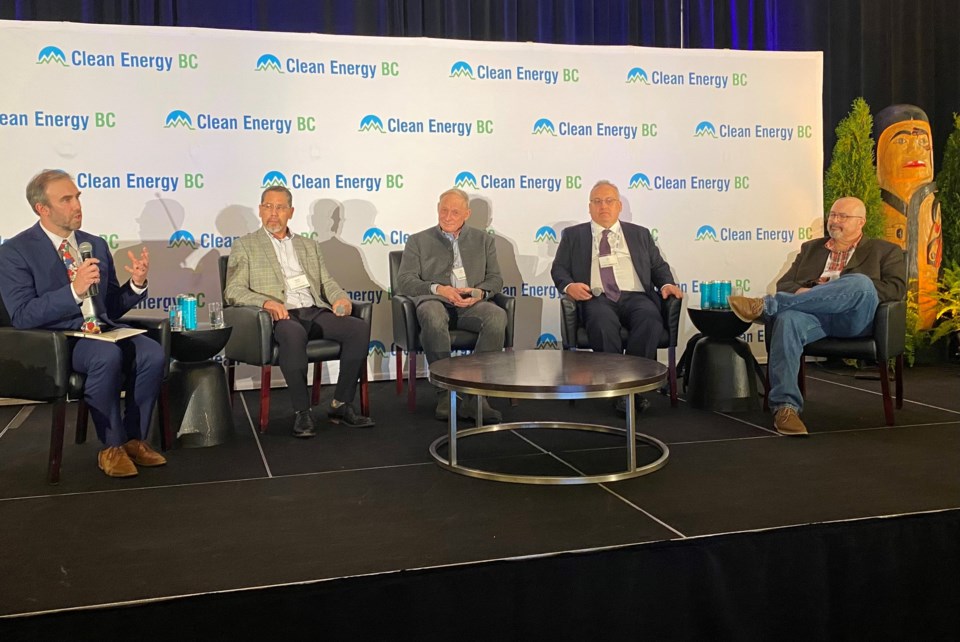First Nations in B.C. will own at least 25 per cent of the $2.3 billion to $3.6 billion worth of new renewable energy projects that BC Hydro plans to have built to meet future electricity, but what about transmission and distribution?
In its recent power call to acquire 3,000 gigawatt hours (GWh) of new clean power, BC Hydro stipulated that successful projects will need to have at least 25 per cent First Nations equity.
It’s unclear whether major transmission projects that BC Hydro plans to build will also involve First Nations equity ownership
BC Hydro plans to spend $36 billion over the next 10 years on power infrastructure, which includes new transmission lines and distribution.
One of the projects is the North Coast Electrification project – a $4 billion twinning project that will involve the construction of a 450-kilometre, 500 kilovolt transmission line that will connect the Williston substation near Prince George and Skeena Substation near Terrace.
First Nations in the region want a piece of it – half of it, to be exact.
But as attendees at a First Nations Energy Conference in Vancouver heard on Monday, BC Hydro may need to change the way it thinks about the way it builds and owns things in B.C., if First Nations are to become partners in the clean power sector.
K’uul Power was formed in 2023 with the goal of increasing First Nations participation in clean energy projects, notably the North Coast Electrification project.
Eight First Nations – including the Haisla, Nisga’a and Wet’suwet’en – are founding members of K’uul Power, which proposes to create a special purpose vehicle company that would build and co-own the new transmission line.
One of the big hurdles to the ambitious project is raising the capital needed.
“We’re talking about a $4 billion transmission line, and the nations owning 50 per cent of it,” K’uul Power CEO Alex Grybowski said Monday at a panel discission at the Clean Energy B.C. First Nations Energy Summit. “It’s not a trivial amount of money.”
Another challenge is convincing BC Hydro, a Crown Corporation, to essentially embrace partial privatization of public utility infrastructure.
“The principal barrier is uncertainty on the other side of the table about whether or not First Nations can really do that,” Grybowski said. “And that really is what it comes down to – reluctance to engage as real partners to build that infrastructure, not just after construction as a passive equity participant, but as the builder.”
First Nations hope that building and co-owning power infrastructure will ensure environmental protection and help them develop capacity in the energy sector.
“The reason they want to own the company that’s building the lines is then you can ensure that the environment is being protected with procurement strategies consistent with achieving maximum First Nation participation,” Grybowski said.
Grybowski told BIV News that the new company would be open to others equity partners, not just the eight founding nations of K’uul Power.
“The door has been open to all to participate,” he said.
BC Hydro has been open to the private sector when it comes to power generation. Much of the wind and run-of-river power projects built in B.C. was financed and built by independent power producers, who then sell power to BC Hydro under long-term power purchase agreements.
Grybowski said he thinks it is feasible for the private sector to also have ownership of transmission infrastructure as well.
“It’s entirely possible for BC Hydro to share in the ownership of a special purpose vehicle that would then lease the line to BC Hydro,” Grybowski said.
There are precedents in B.C. for First Nations participating in transmission projects.
The Kingsvale Electricity Transmission line south of Merritt in the Nicola Valley was built in partnership with the First Nations through the Lower Nicola Band Development Corp.
The 138-kV line is a distribution line built to provide power to the Trans Mountain pipeline Kingsvale pumping station. The Lower Nicola Indian Band Development Corp. and its partner, Valard Construction LP, operate and maintain the distribution line.
Lower Nicola Indian Band Chief Stu Jackson said it took 10 years to “get across the finish line” in 2020.
First Nations wanting to participate as equity partners in major projects face challenges with financing and capacity.
“I’ve been involved in a number of projects where First Nations want to lead a project, and they have not been able to get the financing to make it work,” said Ron Monk, principal of Energy and Water Resources at Kerr Wood Leidal Associates.
As for developing skills, First Nations can develop technical capacity by participating in project development – a kind of learn by doing approach.
“If you’re forever hiring external people to do this for you, then you don’t really learn how to do it yourself,” Monk said. “If nations want to do these kind of projects, they need to build that capacity within them.”
He added that there are resources available to help First Nations with capacity building, such as the First Nations Major Projects Coalition.
Hudson Foley, vice president of strategic projects for Maskwa Environmental Consulting Ltd., said First Nations can develop capacity by learning on the job. Soil sampling, environmental monitoring, and engineering are areas where First Nations can learn on the job.
“You have them work right on that under the direction of a qualified individual,” Foley said. “So they’re actually being part of the project, and learning about he project and they’re getting paid to do and become part of the team. And those resources can then be built into another project agreement.”



